The atomic bombing of Japan’s city of Hiroshima on August 6, 1945, is one of the most horrific events in human history. In response, Hiroshima has established the Hiroshima Peace Memorial Park (also known as the Hiroshima Peace Park) to commemorate the victims of the bombing, and to educate current and future generations about the effects of nuclear warfare. This article will provide an overview of the Hiroshima Peace Memorial Park and Atomic Bomb Museum, including its history, landmarks, exhibits, and facilities. Visitors to Hiroshima will find this Hiroshima Peace Park to be a solemn reminder of the tragedy of war, as well as a symbol of peace and hope for the future.
Overview
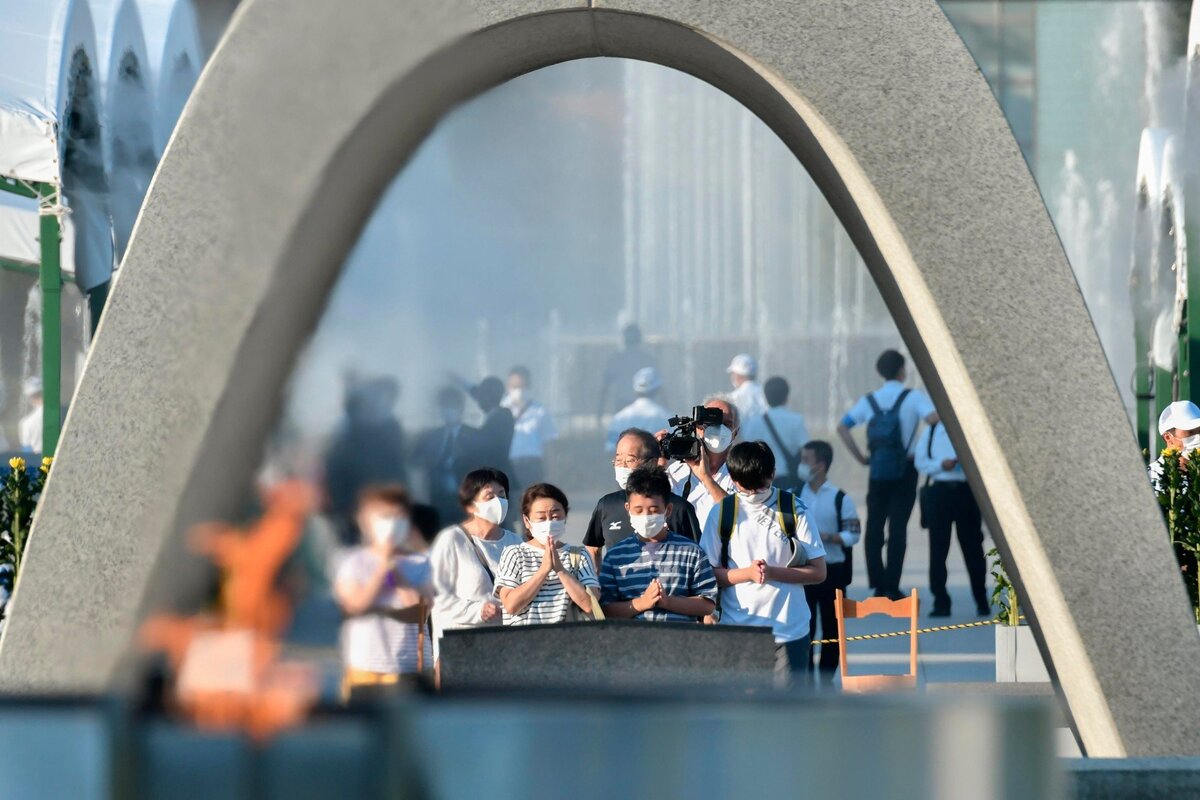
@Dzen.ru
The Hiroshima Peace Memorial Park and Atomic Bomb Museum is a must-visit for those interested in the history of World War II. Located in the center of Hiroshima City, this incredible park and museum serves as a reminder of the destruction caused by the atomic bombing in 1945. Spread across 114 hectares, this memorial park provides a space to remember and reflect on the victims of the atomic bombing.
The main site of the Atomic Bomb Dome houses the museum, which provides a unique insight into the devastation of the bombing. With an abundance of historic artifacts, including survivor testimonies, photographs and film footage, visitors can learn more about the tragic events of 1945. It also contains a Children’s Peace Monument, which pays tribute to the innocent lives lost in the bombing and is a touching sight.
Green space dominates the Hiroshima Peace Memorial Park, encompassing the majority of its area and divided into 12 zones that chronicle the history of Hiroshima. Each zone features diagrams and information boards offering an overview of the events that unfolded.
Moreover, the park is embellished with numerous monuments and commemorative structures scattered across its grounds.
The Flame of Peace, located in the south-western area of the park, is one of the most striking monuments. This large Eternal Flame represents a plea to never use atomic weapons again and has become an area of quiet reflection, particularly around anniversaries.
The memorial park and Atomic Bomb Museum are poignant and educational places for anyone wishing to learn more about World War II and the devastating consequences of nuclear warfare. So, if you take a trip to Hiroshima City, make sure the Hiroshima Peace Memorial Park and Atomic Bomb Museum is at the top of your list.
History
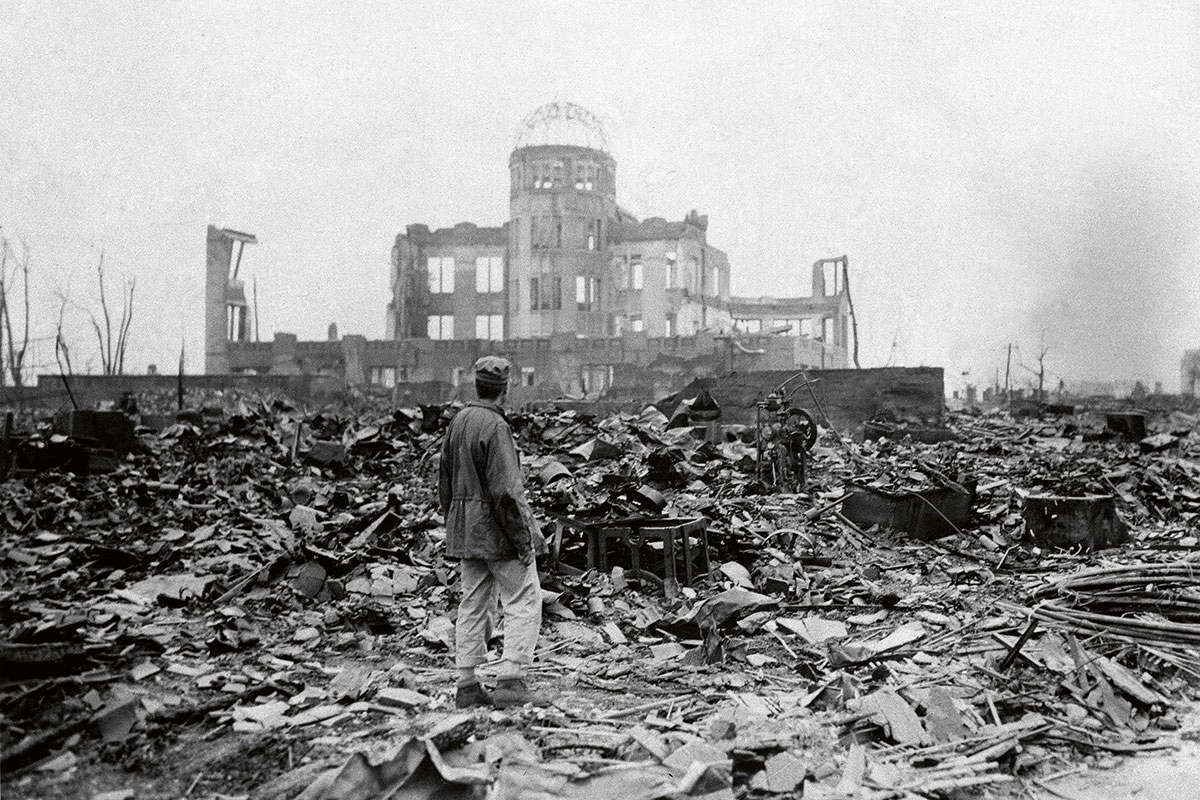
@Habervakti.com
Hiroshima Peace Memorial Park and Atomic Bomb Museum stand as dedicated monuments to commemorate the victims of the atomic bomb that devastated the city of Hiroshima in 1945. Established in April 1955, nearly a decade after the bombing, these institutions serve as powerful testaments to peace and hope for future generations.
The park consists of several monuments, including the Atomic Bomb Dome, the Children’s Peace Monument and the Hiroshima National Peace Memorial Hall. Each of these represent a part of Hiroshima’s tragic history and serves as a reminder of the devastation caused by the use of atomic weapons.
The main attractions are the Hiroshima National Peace Memorial Hall and the Atomic Bomb Dome. The Hiroshima National Peace Memorial Hall contains extensive archive material from the bombing and remnants of the devastation caused by the blast. The Atomic Bomb Dome is the only building in the city that survived the atomic bomb and serves as a heart-wrenching reminder of the catastrophic event. The Children’s Peace Monument is also located in the park, and it was built in memory of all the children affected by the bombings.
Atomic Bomb Museum is also situated in the park. This museum contains various artifacts and exhibitions from the bombing and it is a great way to learn about Hiroshima’s history. The museum also contains the Ring of Remembrance which honors the deceased victims of the bombing.
Visiting Hiroshima Peace Memorial Park is a sobering but rewarding experience and a reminder that such tragedies must not happen again. This park serves as a reminder of the devastations of war and its powerful impact on generations.
The Atomic Bomb Dome
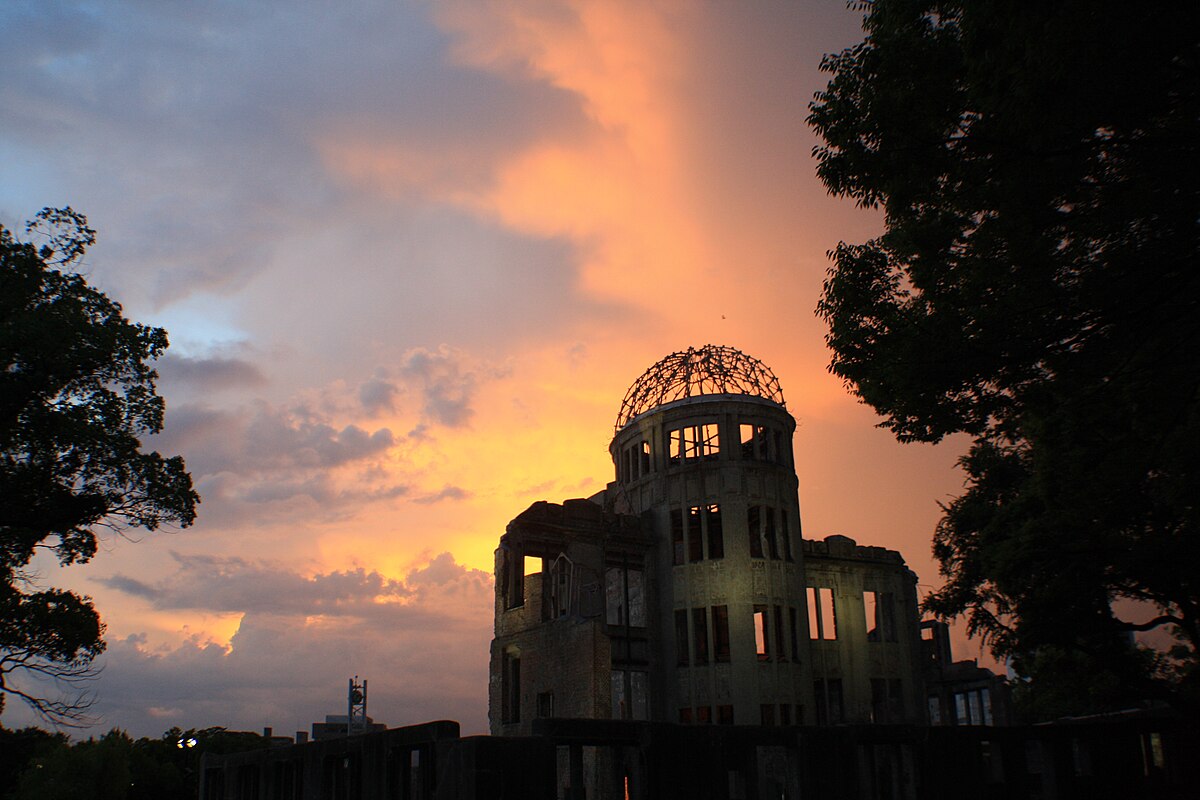
@Commons.wikimedia.org
Situated right in the center of Hiroshima’s Peace Memorial Park, the Atomic Bomb Dome is one of the most iconic landmarks in Japan and a Unesco World Heritage Site. The Hiroshima Prefectural Industrial Promotion Hall, now a solemn structure, was once part of the city’s landscape. However, following the dropping of the atomic bomb on Hiroshima on August 6, 1945, this building emerged as the sole survivor within the blast radius. As a result, it has come to symbolize the consequences of nuclear warfare and a reminder of the immense human losses caused by it. It is a sobering and powerful symbol of peace and it has become the defining image of the Hiroshima bombing.
Visiting the Atomic Bomb Dome
Visiting the Atomic Bomb Dome is an unforgettable experience. The area outside the building is kept in perfect condition by volunteers and it is filled with monuments and tributes from visitors all over the world. It is a profound visit that gives travelers an insight into the devastation of war and the fragility of life. It is also a reminder that despite the destruction and tragedy, Hiroshima has become a beacon of hope and a symbol of peace.
The Hiroshima Peace Memorial Park
The Hiroshima Peace Memorial Park offers visitors a range of educational and cultural activities to explore the history of the bombing and the importance of the Atomic Bomb Dome for world peace. There is an audio guide available that explains the significance of the site, and visitors can learn more about the events that led to the bombing, and the long-term consequences of the decision. Hiroshima Peace Park is also home to a museum and monuments dedicated to victims of the attack.
A Place of Remembrance and Hope
It is essential to bear witness to the destruction caused by nuclear warfare and the Atomic Bomb Dome is a powerful site to do so. It serves to honor the victims and commemorate the hope for world peace that exists in the aftermath of the devastating attack on Hiroshima. Visiting this memorial offers a respectful and enlightening experience, making it a must-see destination when traveling in Japan.
Peace Flame
No visit to Hiroshima Peace Memorial Park and Atomic Bomb Museum is complete without viewing the Peace Flame. Located at the center of the park is a single, eternal flame that serves as a reminder of the devastating effect of atomic bombs and symbolizes the hope for peace. The flame is fueled by natural gas and is protected by a dome-shaped shelter. It has been burning since the Hiroshima Heiwa-kan (Peace Museum) opened in 1955 to remember the victims of the Hiroshima bombing.
The Idea Behind the Peace Flame
An American parent, who lost a child in the bombing, proposed the installation of the Peace Flame. Posing the question, “Will Hiroshima ever be allowed to forget the tragedy of August 6?” this grieving parent sparked a response from the Hiroshima City Mayor. In reply, the mayor declared that the construction of the Peace Flame would stand as a commemoration for those who sacrificed their lives, serving as a poignant reminder of the gravity of the atomic bombing.
Consequently, the Peace Flame stands as a visible reminder that we should never repeat the horrors of the atomic bombing.
Special Ceremonies and Events
Special ceremonies held at the Peace Park throughout the year, including the anniversaries of the bombings on August 6 and August 9, light the Eternal Peace Flame. Other events that mark important occasions of peace such as the Nobel Peace Prize ceremony also light the flame. Each of these ceremonies reminds us that Hiroshima is and always should be a place dedicated to the notion of peace and the elimination of nuclear weapons. The flame serves as a reminder and a symbol of hope that one day, peace will be achieved.
The Hiroshima Peace Park is a powerful reminder of the tragic events that took place in 1945. To learn more about the history of the Park, the website of the Hiroshima Peace Memorial Park is an excellent resource. It provides visitors with detailed information about the origins and history of the Park, along with its current activities and events.
Children’s Peace Monument
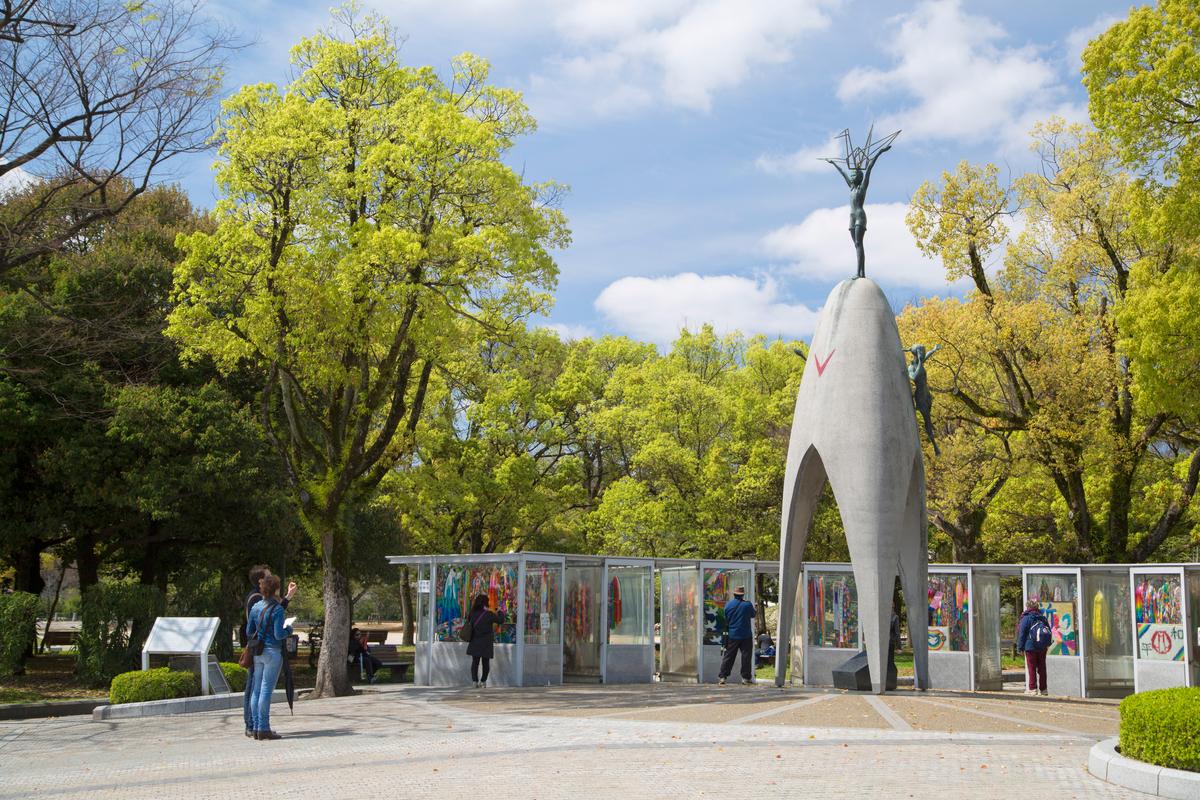
@kayak.com.my
Located inside the Hiroshima Peace Memorial Park is a monument that speaks of the innocence and fragility of life during wartime. The Children’s Peace Monument, also known as the ‘Statue of the Girl in the Shelter’, was built in memory of all the children who died in the aftermath of the atomic bomb. It was designed by the sculptor called Kazuo Kikuchi and built in remembrance of a young girl who was a victim of the atomic bomb.
Her name was Sadako Sasaki and her story of hope and resilience inspired other victims to continue living their lives in spite of the tragedy that had occurred. The statue of Sadako, holding a crane bird in both her hands, stands as a symbol of peace and innocence, reminding people of the strength of human spirit.
The monument also features thousands of paper cranes, left behind by children from all over the world, demonstrating their commitment to peace. The Children’s Peace Monument is not only a solemn reminder of the tragic events of the past, but a message to all those who visit of the power of resilience and hope even in the darkest of times.
Peace Memorial Museum
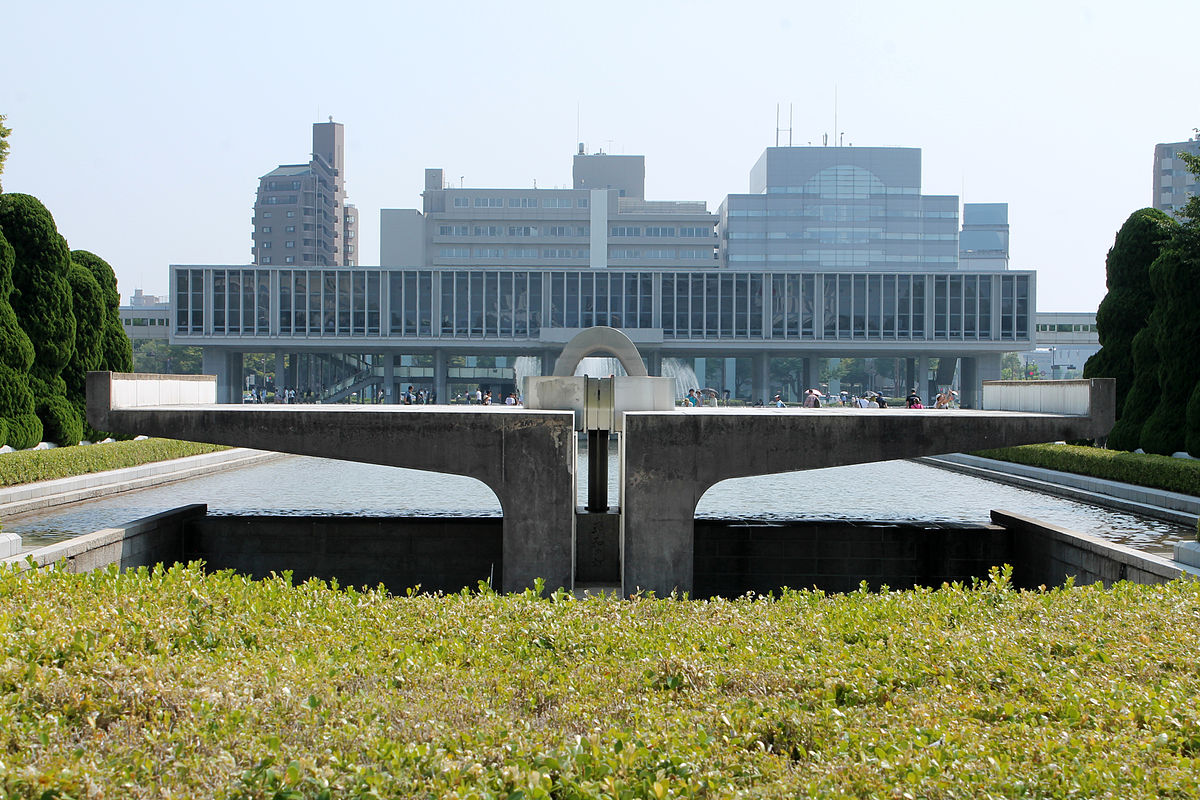
Located within Hiroshima Peace Memorial Park, the Peace Memorial Museum is the solemn symbol of the park’s mission to remember the horrors of atomic warfare. Devoted to the history surrounding the atomic bomb’s devastation of Hiroshima, it serves as a reminder of the tragedies of war and a call for a peaceful future.
Constructed in 1955, the museum contains countless artifacts from the days immediately after the bombing, including photos, documents, and shrapnel. It describes the suffering of the survivors and the tragic destruction of buildings and other structures throughout the city. Visitors can also view the graphic remains of charred clothing and personal items that survived the bomb’s carnage.
The museum also includes a gallery dedicated to the hibakusha—the survivors of the atomic bombing. Their personal stories, experiences, and accounts are featured to help spread awareness about the power of an atomic weapon. Additionally, the museum hosts several art exhibitions and shows related to peace in order to enhance its mission of conveying the importance of disarmament and creating a safer future.
For many, a visit to the Peace Memorial Museum is an important part of understanding the tragedy of war and appreciating the importance of peace. Although the exhibitions can be difficult to witness, they provide a powerful reminder of the human story of Hiroshima and the importance of striving towards a more peaceful existence. A visit to Hiroshima Peace Memorial Park’s Peace Memorial Museum provides visitors with a deeper understanding of the site’s past and why a world without war is an ultimate goal for humanity.
Hiroshima National Peace Memorial Hall for the Atomic Bomb Victims
The Hiroshima National Peace Memorial Hall for the Atomic Bomb Victims is an important part of the Hiroshima Peace Park. It was first established in 1964 and consists of a Peace Memorial Hall and a Memorial Tower Mound. The Hall is a solemn memorial dedicated to the victims of the atomic bomb blast and the Tower Mound is a repository for the remains of unidentified victims. The main focus of the Memorial Hall is a cenotaph monument bearing the names of all the people who died from the atomic bombing of Hiroshima.
The Hall includes the Peace Museum and the Hiroshima National Peace Memorial Center, facilitating discussions on nuclear weapon effects. The Peace Park also features the perpetual Peace Flame since 1964 and the Children’s Peace Monument in memory of innocent children lost in the atomic bombing.
Memorials and Monuments
The Hiroshima Peace Memorial Park is filled with monuments that commemorate the victims of the atomic bombing. Located within the park is the Atomic Bomb Dome, a unique and iconic structure, which remembers the many lives affected by the disaster in 1945. Historians believe that the A-Bomb Dome was all that remained of an industrial exhibition hall that sustained the A-Bomb blast and the subsequent firestorm that followed.
Preserved and recognized as a UNESCO World Heritage Site, the building has become a symbol of peace, serving as a poignant reminder for us never to replicate the horrors of World War II.
Other Monuments in the Park
The park features notable monuments like the Peace Flame, Children’s Peace Monument, and Peace Memorial Museum. The Flame, continuously burning since 1964, is a powerful symbol, reminding us not to take peace and justice for granted.
The Children’s Peace Monument stands in honor of Sadako Sasaki, who endured lasting effects from the bombing and tragically succumbed to leukemia in 1955.
Her story, like many others of her time, demonstrates the human cost of the A-Bomb and serves as a reminder of how vital it is for us to strive for lasting world peace. Finally, the Peace Memorial Museum, inaugurated in 1955, not only offers an informative visual tour of this chapter of Japan’s history but also provides helpful and thought-provoking historical facts related to the Atomic Bomb.
A Place of Sorrow and Hope
Hiroshima Peace Memorial Park serves as a powerful reminder of the devastation that can result from human actions, but also stands as a testament to the resilience of nature, the will of the people, and the never-ending hope for peace and justice. It is a place of both sorrow and hope, of tragedy and of triumph. Visitors can come away with a great deal of understanding and new insight into the affects of the Atomic bombing, as well as a renewed commitment to the cause of achieving peace the world over.
Facilities
Apart from its many memorial structures, Hiroshima Peace Memorial Park provides its visitors with some useful facilities. The park has several gardens, a large lawn for events, several variations of vending machines and two shops which sells park related souvenirs. To make a visit pleasant for everyone, the park provides wheelchairs and strollers, topped off by a facility offering snacks and meals. There is also a free Wifi connection available in the park.
For the comfort of the visitors, there are several benches located around the park to sit and enjoy the tranquil atmosphere. To top it all off, there are restrooms located around the park with diaper changing areas as well. Additionally, if we want to start the visit early, we can make use of the park’s convenient parking lot. In summary, Hiroshima Peace Memorial Park offers its visitors a wide range of facilities for utmost comfort and convenience.
Hiroshima Peace Park – Conclusion
In conclusion, the Hiroshima Peace Memorial Park and Atomic Bomb Museum is an important place of learning for all the people of the world. This location, marked by a tragic history, vividly displays the consequences of a singular atomic bomb.
Visitors can pay their respects to the victims of the atomic bomb at the multitude of memorials and monuments, forever as a reminder of this dreaded moment in history.
From the dome-shaped ruin of the Genbaku Dome to the Flame of Peace that will continue to burn forever, to the Children’s Peace Monument, honouring thousands of children killed by the bomb, each monument is an everlasting statement of the tragedy that was. Visiting this park and the museum is a must for anyone desiring to learn more about the human cost of a single atomic bomb, and understanding the importance of wishing for world peace.
We hope you have enjoyed reading this article about Japan’s incredible and varied landscape, and that you now feel inspired to plan a once-in-a-lifetime trip to this amazing country. Be sure to explore more on Japan: A Once-in-a-Lifetime Travel Destination if you haven’t already done so – you won’t regret it!



Leave a Comment